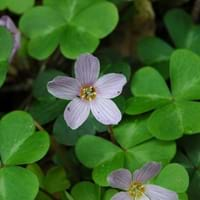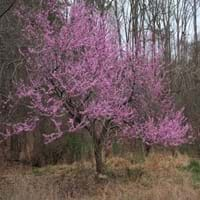Life Span
Perennial
Perennial
Origin
Western United States, Canada
Northeastern United States, Mid-Atlantic United States, Southeastern United States, North-Central United States, Central United States, South-Central United States, Southwestern United States, Canada
Types
not available
Cercis
Habitat
Moist woods, Redwood forests
Bluffs, stream banks, Wet forest, Woods
USDA Hardiness Zone
7-9
3-9
Sunset Zone
4, 5, 6, 7, 8, 9, 14, 15, 16, 17, 18, 19, 20, 21, 22, 23, 24
1a, 1b, 2a, 2b, 3a, 3b, 7, 8, 9, 10, 11, 12, 13, 14, 15, 16, 17, 18, 19, 20
Habit
Spreading
Oval or Rounded
Flower Color
White, Purple, Pink, Lavender
White, Purple, Pink, Light Pink
Flower Color Modifier
Bicolor
Bicolor
Fruit Color
Not Available
Brown, Chocolate
Leaf Color in Spring
Green
Purple, Plum
Leaf Color in Summer
Green
Dark Green
Leaf Color in Fall
Green
Yellow, Yellow green
Leaf Color in Winter
Light Green
Not Available
Leaf Shape
Heart-shaped
Heart-shaped
Plant Season
Spring, Summer, Fall, Winter
Spring, Summer, Fall
Sunlight
Partial Sun, Partial shade, Full Shade
Full Sun, Partial Sun
Growth Rate
Very Fast
Medium
Type of Soil
Loam
Clay, Loam, Sand
The pH of Soil
Acidic, Neutral
Acidic, Neutral, Alkaline
Soil Drainage
Average
Well drained
Bloom Time
Early Spring, Spring, Late Spring, Early Summer, Summer, Late Summer, Early Fall, Fall
Early Spring, Spring, Late Spring
Tolerances
Drought
Dry soil, Salt, Soil Compaction, Wet Site
Where to Plant?
Container, Ground, Pot
Ground
How to Plant?
Divison, Seedlings
Seedlings, Stem Planting
Plant Maintenance
Low
Low
Watering Requirements
Average Water Needs, Medium
Requires regular watering, Water more in summer
In Summer
Ample Water
Lots of watering
In Spring
Adequately
Ample Water
In Winter
Moderate
Average Water
Soil pH
Acidic, Neutral
Acidic, Neutral, Alkaline
Soil Type
Loam
Clay, Loam, Sand
Soil Drainage Capacity
Average
Well drained
Sun Exposure
Partial Sun, Partial shade, Full Shade
Full Sun, Partial Sun
Pruning
Remove damaged leaves, Remove dead branches, Remove dead leaves
Remove damaged leaves, Remove dead branches, Remove dead leaves, Remove hanging branches
Fertilizers
All-Purpose Liquid Fertilizer
fertilize in growing season, Nitrogen, slow-release fertilizers
Pests and Diseases
Red blotch
Caterpillars, Red blotch, Scale
Plant Tolerance
Drought
Dry soil, Salt, Soil Compaction, Wet Site
Flower Petal Number
Single
Single
Foliage Texture
Medium
Medium
Foliage Sheen
Matte
Glossy
Attracts
Not Available
Birds
Allergy
Not Available
Mild Allergen
Aesthetic Uses
Ground Cover
Beautification, Bonsai, Landscape Designing, Showy Purposes
Beauty Benefits
Not Available
No Beauty Benefits
Environmental Uses
Air purification, Provides ground cover
Air purification, Prevent Soil Erosion, Shadow Tree
Medicinal Uses
Antirheumatic, Boils, Opthalmic, Rheumatism, Sore Eyes, Swelling
Astringent, Diarrhea, Dysentry, Fever, Leukemia
Part of Plant Used
Flowers, Leaves
Bark, Buds, Flowers, Seeds
Other Uses
Culinary use, Employed in herbal medicine, Used As Food, Used for fragrance
Decoration Purposes, Showy Purposes, Used as firewood, Used As Food, Used as Ornamental plant, Used for its medicinal properties, Used for woodware
Used As Indoor Plant
No
Yes
Used As Outdoor Plant
Yes
Yes
Garden Design
Groundcover, Wildflower
Feature Plant, Foundation, Mixed Border, Shade Trees
Botanical Name
OXALIS oregana
CERCIS canadensis
Common Name
Redwood Sorrel
Eastern Redbud
In Hindi
Redwood Sorrel
Eastern Redbud
In German
Redwood Sorrel
OstRedbud
In French
Redwood Sorrel
Redbud Orient
In Spanish
Redwood alazán
Eastern Redbud
In Greek
Redwood Sorrel
Ανατολική κουτσουπιά
In Portuguese
Redwood Sorrel
Redbud oriental
In Polish
Redwood szczaw
Redbud wschodniej
In Latin
Rumex Redwood
Cercis
Phylum
Magnoliophyta
Tracheophyta
Class
Magnoliopsida
Magnoliopsida
Family
Oxalidaceae
Fabaceae
Clade
Angiosperms, Eudicots, Rosids
Angiosperms, Eudicots, Rosids
Tribe
Not Available
Cercideae
Subfamily
Not Available
Caesalpiniaceae
Number of Species
Not Available
Season and Care of Redwood Sorrel and Eastern Redbud
Season and care of Redwood Sorrel and Eastern Redbud is important to know. While considering everything about Redwood Sorrel and Eastern Redbud Care, growing season is an essential factor. Redwood Sorrel season is Spring, Summer, Fall and Winter and Eastern Redbud season is Spring, Summer, Fall and Winter. The type of soil for Redwood Sorrel is Loam and for Eastern Redbud is Clay, Loam, Sand while the PH of soil for Redwood Sorrel is Acidic, Neutral and for Eastern Redbud is Acidic, Neutral, Alkaline.
Redwood Sorrel and Eastern Redbud Physical Information
Redwood Sorrel and Eastern Redbud physical information is very important for comparison. Redwood Sorrel height is 10.20 cm and width 30.00 cm whereas Eastern Redbud height is 760.00 cm and width 760.00 cm. The color specification of Redwood Sorrel and Eastern Redbud are as follows:
Redwood Sorrel flower color: White, Purple, Pink and Lavender
Redwood Sorrel leaf color: Green
Eastern Redbud flower color: White, Purple, Pink and Light Pink
- Eastern Redbud leaf color: Purple and Plum
Care of Redwood Sorrel and Eastern Redbud
Care of Redwood Sorrel and Eastern Redbud include pruning, fertilizers, watering etc. Redwood Sorrel pruning is done Remove damaged leaves, Remove dead branches and Remove dead leaves and Eastern Redbud pruning is done Remove damaged leaves, Remove dead branches, Remove dead leaves and Remove hanging branches. In summer Redwood Sorrel needs Ample Water and in winter, it needs Moderate. Whereas, in summer Eastern Redbud needs Lots of watering and in winter, it needs Average Water.





